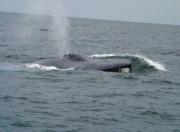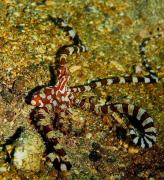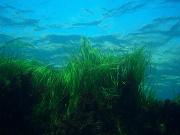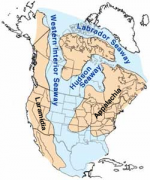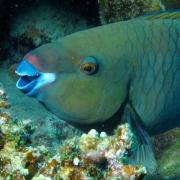Radio Program
Our regular Science and the SeaTM radio program presents marine science topics in an engaging two-minute story format. Our script writers gather ideas for the radio program from the University of Texas Marine Science Institute's researchers and from our very popular college class, Introduction to Oceanography, which we teach to hundreds of non-science majors at The University of Texas at Austin every year. Our radio programs are distributed at to commercial and public radio stations across the country.
We all know that El Niño can have a big impact on the weather here in the United States. But El Niño’s effects aren’t limited to the U.S. They can alter the climate across the entire planet. In fact, an especially powerful El Niño may have triggered the deadliest famine in history.
The famine lasted from 1876 to ’78. It probably killed more than 50 million people. Most of the victims were in China, but there were many in Brazil, India, and parts of Africa as well.
To keep tabs on the health of whales, marine biologists sometimes catch the “snot” from the whales’ blowholes -- a mixture of water, mucus, and other substances. And in recent years, they’ve found a new way to catch it: with drones.
The small remote-controlled vehicles fly above a whale and wait for it to clear its lungs. A plate or dish then catches some of the material expelled through the blowhole. Biologists check the “blow” for the whale’s DNA, hormones, algae, bacteria, and other substances.
The right name can make all the difference in a marine organism’s reputation. Few, for example, could resist Wunderpus photogenicus -- the “photogenic wonderful octopus.” It has a reddish-brown body marked by patterns of white stripes and spots. And it can contort its body to resemble other creatures.
Wonderpus is found around the western rim of the Pacific Ocean, southward from the Philippines. Its body is only a few inches long, while its arms can span more than a foot.
Seagrass beds are complex ecosystems that support fish and other marine life. Perhaps it’s not surprising, then, that an effort to restore some seagrass beds worked best when several species of seagrass were planted together.
Seagrass is important for both marine life and human life. It provides habitat and hiding places for fish and many other marine organisms. That maintains a ready supply of those organisms for human consumption. Seagrass also helps protect the coastline from tropical storm damage, and stores carbon that otherwise would be in the air, making Earth even warmer.
The male Gulf corvina is a loudmouth. In fact, it may be too loud for its own good. Its sounds guide fishing boats right to its own spawning grounds. And that could endanger the entire corvina population.
Appropriately enough, Gulf corvina are a type of croaker. They inhabit the Gulf of California, between Baja California and the Mexican mainland. Every spring, the entire adult population gathers to spawn at the northern edge of the gulf -- at the mouth of the Colorado River. To help them attract mates, male corvina make a lot of noise -- a series of short, loud pulses.
A hundred million years ago, Kansas was inhabited by some creatures with big, sharp teeth: sharks up to 30 feet long, a fish that’s been described as a tarpon with fangs, and a 45-foot dinosaur that was one of the deadliest predators on the planet.
That’s because Kansas was at the bottom of a sea that stretched from the Arctic to the Gulf of Mexico. Known as the Western Interior Sea, it was up to a thousand miles wide. Its warm, shallow waters supported an abundance of life, including giant clams, giant fish, and giant dinosaurs.
The polar bear is more than just a big mammal; it’s an icon for an entire region -- it’s hard to think of the Arctic without picturing these beautiful creatures. Yet it’s also a symbol for how that region is changing. A warmer climate is reducing the amount of sea ice in the Arctic, which could lead to a big reduction in polar bear populations.
No bear is bigger than the polar bear -- an adult male can weigh up to three-quarters of a ton. To maintain that size, polar bears spend much of their time hunting seals, which are rich in fat and calories.
When you bite into an ear of corn, you’re after the juicy kernels. But if you get a little too enthusiastic, you can get some of the cob, too.
One type of fish always bites into the cob. The parrotfish eats the living parts of coral, as well as algae on the coral. To get the good stuff, though, it has to bite into the coral skeleton -- a structure that’s like rock. That’s tough on the teeth. But a recent study says those teeth are well designed for the job. They’re hard, stiff, and they seldom break.
If zombies ever run out of brains to munch on, they might look to the sea for more. They can find brains that are up to six feet tall and live for almost a millennium. The brains might be a little crunchy, though -- they’re corals, so they consist of a hard skeleton with a thin coating of living organisms.
Brain corals are generally round or oblong, with a wrinkled surface that looks like the contours of a human brain. They’re found in tropical waters in the Caribbean, the Gulf of Mexico, parts of the Atlantic, and elsewhere.
The big ships that ply the Indian Ocean and South China Sea help power the world’s economy. And they also may help power the weather. In particular, they may “seed” the formation of tall clouds that produce lightning -- twice as much lightning along their shipping lanes as in the surrounding ocean.
Researchers were mapping lightning strikes in that part of the world when they noticed something odd: two straight lines where there were far more lightning strikes than average. They compared those maps with traffic along the shipping lanes, and found that the two matched perfectly.


